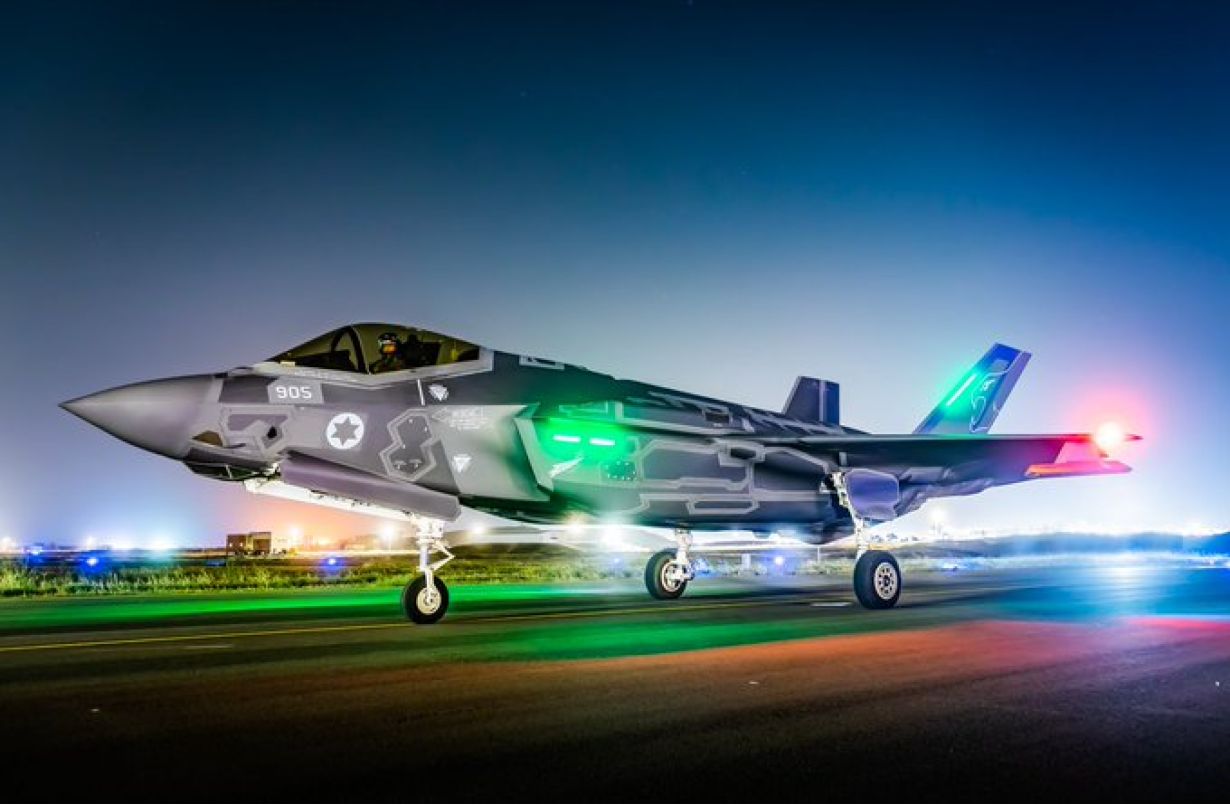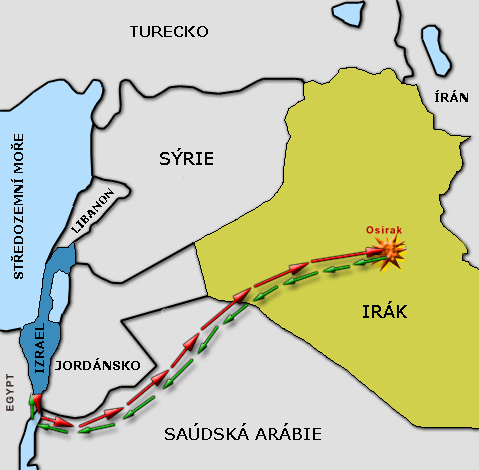The latest intelligence from the West indicates that Iran could be on the brink of attacking Israel to retaliate against the Damascus embassy bombing. Experts say Israel may strike Iranian nuclear facilities if Tehran launches a direct attack on the Jewish nation. Interestingly, this will not be the first time for Israel to hit a nuclear facility.
The Israel Air Force (IAF) fighter jets reportedly bombed Iran’s embassy in Damascus, Syria, on April 1, killing several high-ranking officials, including Mohammed Reza Zahedi, a top commander in Iran’s elite Revolutionary Guards (IRGC), the most known Iranian Commander to be eliminated since the assassination of IRGC General Qassem Soleimani in Baghdad in 2020.
Iran has since pledged to avenge the bombing. US President Joe Biden said on April 12 that Iran’s attacks were coming “sooner than later” and pointed out that his message to Tehran was to simply “don’t.” The US has dispatched additional military support in case Iran launched a strike on Israel.
In what could mark the beginning of a possible confrontation, Iran’s Revolutionary Guards raided and seized a Portuguese-flagged vessel, ‘MSC Aries, ‘ which it said was “linked to Israel.” The Iranian forces announced that the vessel was being transferred to Iran’s territorial waters.
According to Israel and the United States, an Iranian attack would involve the firing of attack drones, ballistic missiles, and cruise missiles from Iran onto Israel, which is currently on high alert.
BREAKING: Iran seizes Portugal-flagged Ship near Strait of Hormuz, claims it is connected to Israel Amid rising tensions due to Iran's promise to retaliate for an Israeli attack near Iran's embassy in Syria that killed two of Iran's Revolutionary Guard members earlier this month pic.twitter.com/lc9KIdEHjK
— Simon Ateba (@simonateba) April 13, 2024
Earlier this week, Israel’s foreign minister issued a threat saying that if Iran attacked Israel from its territory, the Israeli military would attack Iran directly. A direct conflict between the two adversaries is expected to snowball into a massive conflict.
Furthermore, the Israeli local media has also stated that Iran could ramp up its enrichment of uranium and build a nuclear warhead amid escalating tensions.
Local Iranian media, on the other hand, has warned that Israel had signaled it would launch an airstrike on Iran’s nuclear facilities if Tehran were to launch an attack on Israeli territory. These concerns may arise out of Israel’s indications over the years that it will launch strikes and destroy Iran’s nuclear facilities that it considers a threat to its security.
In June 2022, for instance, dozens of IsAF jets conducted “air maneuvers” over the Mediterranean Sea “simulating striking Iranian nuclear facilities,” according to the Times of Israel. The Israeli Defense Forces (IDF) said the drill included “long-range flight, aerial refueling, and striking distant targets.”
#BREAKING Israeli foreign minister warns if Iran attack on us from its territory, we will attack Tehran.
Iran says if Israel strikes Iran's nuclear facilities then we will strike Israel's Dimona nuclear facility in 6 minutes.
—Current Report pic.twitter.com/Llu6cGAaOP
— War Intel (@warintel4u) April 10, 2024
Israel’s willingness to attack Iran’s nuclear facility is not new. Despite Iran’s Islamic Revolutionary doctrine forbidding the use of atomic energy for military purposes, the country’s nuclear enrichment affords it enormous influence over Western nations and guarantees what it regards as its “survival” in an environment that is perpetually hostile and dominated by Israel and the US.
Iran has a host of nuclear facilities, including research reactors at Bonab, Ramsar, and Tehran; a heavy water reactor and production plant at Arak; a nuclear power station at Bushehr; a uranium mine at Gachin; a uranium conversion plant at Isfahan; a uranium enrichment plant at Natanz, Qom; and another underground uranium enrichment facility at Fordow.
Israel, the US, and Western allies have maintained, over the last couple of years, that Iran is enriching uranium to levels of purity that have no civilian use and are bringing it to the threshold of producing a nuclear weapon.
While analysts predict that it is unlikely that either side will engage in a full-blown military conflict at this point when the region is already in turmoil and resources overstretched, the threat of war and a region-wide escalation is still on the table.
As a possible Israeli strike on Iranian nuclear facilities is discussed, EurAsian Times takes you to the 1980s when Israeli forces launched a daring attack on another country’s nuclear facility neighboring Iran.

Israel’s Attack On Iraq’s Nuclear Facility
In the annals of military history, June 7, 1981, holds a unique place, for it was the day when Israel launched its ‘Operation Opera.’ That day, a nuclear reactor being built in Baghdad with French aid was destroyed by Israeli F-16s. The reactor plant was dubbed ‘Osirak’ by the French.
Iraq bought a French nuclear reactor of the Osiris class in 1976. Although Iraq and France insisted that the reactor was meant for civilian scientific study, the Israelis were skeptical of the reactor’s intentions, suspecting that it would build nuclear weapons that would intensify the ongoing Arab-Israeli conflict.
Deep within Iraq, the Osirak reactor was struck on June 7, 1981. The reactor had “less than a month to go” before “it might have become critical,” according to Israel, which described the operation as an act of self-defense.
It was reported that one French citizen and ten Iraqi soldiers were killed in the airstrike. This became the world’s first-ever strike against a nuclear reactor. Israel was widely condemned internationally after the strike, but the Jewish state refused to back down.
The attack squadron was made up of eight F-16As, equipped with two Mark-84 2,000-pound or 910 kilograms unguided delay-action bombs each. The F-16s were accompanied by six F-15As that were responsible for providing fighter support.

After departing Etzion Airbase, the Israeli aircraft were able to fly over Saudi Arabian and Jordanian airspace without any trouble. When over Jordanian airspace, the Israeli pilots spoke in Arabic with a Saudi accent to avoid being detected. They also informed Jordanian air controllers that they were a Saudi patrol that had lost its way.
They impersonated Jordanians while flying over Saudi Arabia by adopting radio signals and flight patterns from that country. Due to their extreme weight, the external fuel tanks installed on the Israeli jets were depleted while they were in flight, so they had to be jettisoned while flying over the Saudi deserts.
Incidentally, while on holiday in the Gulf of Aqaba, King Hussein of Jordan observed the Israeli markings on the jets as they passed over his yacht. Based on the planes’ position, direction, and weaponry, Hussein rapidly concluded that the Iraqi reactor was the most likely target.
Hussein got in touch with his government immediately and ordered the officials to warn the Iraqis. However, an unfortunate communication breakdown prevented the notification from being received, and the Israeli planes flew into Iraqi airspace without being intercepted.

The squadron separated as soon as it entered Iraqi airspace; two F-15s formed a close escort with the F-16 squadron, while the other F-15s dispersed throughout the country as a backup and diversion. The attack was subsequently launched.
Writing in The Jerusalem Post, Seth J. Frantzman observed: “In only several minutes on that day, Israel established a doctrine that it would act to prevent any existential threat involving weapons of mass destruction in the region.
Operation Opera and the accompanying declarations from the Israeli government created the Begin Doctrine, which made it clear that the strike was “a precedent for every future government in Israel” rather than an isolated incident.
The doctrine declares any regional enemy that intends to destroy the State of Israel cannot be permitted to obtain weapons of mass destruction, principally nuclear weapons.
- Contact the author at sakshi.tiwari9555 (at) gmail.com
- Follow EurAsian Times on Google News




